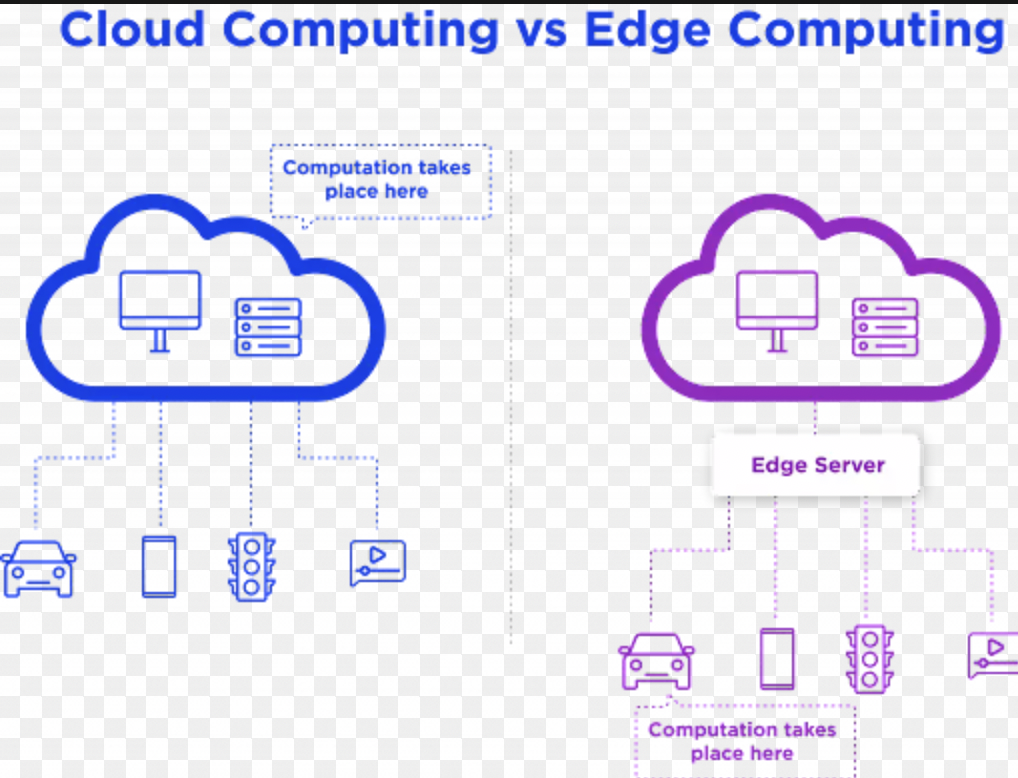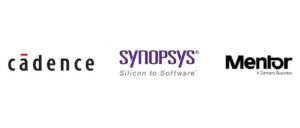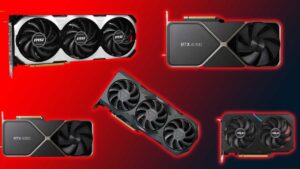Introduction
In today’s fast-paced digital world, the landscape of computing is evolving rapidly. Two terms that have gained significant prominence are “cloud computing” and “edge computing.”
While these two are essential components of modern computing, there are other forms of computing worth exploring as well.
In this blog post, we will delve into cloud computing, edge computing, and other emerging computing paradigms. We will use real-life analogies and examples to help you understand these concepts better.
Join Our WhatsApp News for updated information on semiconductors & AI
Section 1: Cloud Computing
What is Cloud Computing?
Cloud computing refers to the practice of using remote servers hosted on the internet to store, manage, and process data rather than relying on local computing resources.
It offers on-demand access to computing resources, such as servers, storage, databases, networking, and software, allowing businesses and individuals to scale their operations without investing heavily in physical infrastructure.
Real-Life Analogy: Cloud Computing is like a Public Library
Just like how you can access a vast collection of books and resources at a public library without needing to own the books, cloud computing allows you to access a wide range of computing resources without the need to purchase or maintain your own servers and hardware.
Example: Dropbox
Services like Dropbox offer cloud storage, enabling users to upload files and access them from any device with an internet connection.
Your files are stored on remote servers (the “cloud”), making them accessible from anywhere.

Read More: Meta Embraces RISC-V for Videos, Inference Accelerators and Training Chips
Section 2: Edge Computing
What is Edge Computing?
Edge computing involves processing data closer to where it is generated, reducing latency and enabling real-time decision-making.
Instead of sending data to a centralized cloud data center, edge devices, like sensors or IoT devices, process data locally or in nearby edge servers.
Real-Life Analogy: Edge Computing is like a Personal Assistant
Think of edge devices as personal assistants who can make decisions quickly.
Instead of sending a task to a central office (cloud data center) and waiting for a response, the personal assistant can handle the task on the spot, improving efficiency.
Example: Autonomous Cars
Autonomous cars require real-time data processing to navigate safely. Edge computing allows these vehicles to process data from sensors and cameras on board, making instantaneous decisions like braking or changing lanes, rather than relying on a distant cloud server.

Image Credits: Wipro
Read More: How RISC V is the Danger for ARM’s Supremacy
Difference between Cloud and Edge Computing
Cloud computing and edge computing are two distinct computing paradigms, each with its unique characteristics, advantages, and use cases. Here’s a breakdown of the key differences between them:
Location of Data Processing:
- Cloud Computing: In cloud computing, data processing and storage occur in centralized data centers located remotely, often far from the end-users or edge devices. This means that data is transmitted over the internet to these centralized servers for processing.
- Edge Computing: Edge computing processes data closer to the source or “edge” of the network, where the data is generated. This minimizes data transfer over long distances and reduces latency.
Latency:
- Cloud Computing: Cloud computing can introduce latency as data must travel to and from remote data centers. This latency may not be suitable for applications requiring real-time or near-real-time responses.
- Edge Computing: Edge computing offers lower latency since data is processed locally. This is crucial for applications like autonomous vehicles or industrial automation, where split-second decisions are necessary.
Bandwidth Usage:
- Cloud Computing: Cloud computing relies on network connections for data transfer, which can lead to significant bandwidth usage, especially for applications generating large amounts of data.
- Edge Computing: Edge computing reduces the need for extensive data transfer, resulting in less bandwidth usage. This is especially beneficial for locations with limited network bandwidth.
Scalability:
- Cloud Computing: Cloud computing provides high scalability by allowing users to access resources on-demand, making it well-suited for applications that experience fluctuating workloads.
- Edge Computing: Edge computing can be less scalable than cloud computing because resources are distributed across edge devices or local servers. Scaling edge infrastructure may require deploying more hardware to specific locations.
Data Security and Privacy:
- Cloud Computing: Data security and privacy concerns can arise when sensitive information is transmitted to external cloud servers. Cloud providers invest heavily in security measures, but users must also implement their own security protocols.
- Edge Computing: Edge computing allows for greater control over data since it remains on local or edge devices. This can enhance data security and privacy, especially for applications that handle sensitive or confidential information.
Use Cases:
- Cloud Computing: Cloud computing is ideal for applications that don’t require real-time processing, such as web hosting, email services, and big data analytics. It’s also useful for applications that benefit from centralized data storage and redundancy.
- Edge Computing: Edge computing is well-suited for applications demanding low latency, like autonomous vehicles, industrial IoT, augmented reality, and smart cities. It is also used for applications that need local data processing, such as video analytics at the edge.
In summary, cloud computing and edge computing are complementary rather than competing paradigms. They serve different purposes and are chosen based on specific application requirements.
Cloud computing offers scalability and remote processing, while edge computing prioritizes low latency, local processing, and enhanced data security.
The choice between these paradigms depends on the nature of the application and the trade-offs between factors like latency, bandwidth, and data control.

Section 3: Other Forms of Computing
Beyond cloud and edge computing, several other computing paradigms are emerging. Here are a few notable ones:
1. Fog Computing
Fog computing is an extension of edge computing. It involves a decentralized infrastructure where data is processed on edge devices or local fog nodes, making it suitable for applications requiring low latency and data analysis.
Real-Life Analogy: Fog Computing is like a Neighborhood Watch
In a neighborhood watch, community members take on the role of ensuring local safety and addressing issues in real time. Similarly, fog computing involves processing data on devices within a neighborhood (or network), enhancing efficiency and responsiveness.
2. Quantum Computing
Quantum computing is a revolutionary field that uses quantum bits (qubits) to perform complex calculations exponentially faster than classical computers. It has the potential to transform industries like cryptography, drug discovery, and material science.
Real-Life Analogy: Quantum Computing is like a Superpowered Calculator
Imagine having a supercharged calculator that can solve incredibly complex math problems in the blink of an eye, whereas traditional calculators would take years to complete the same task. Quantum computing is poised to revolutionize problem-solving.
3. Grid Computing
Grid computing involves harnessing the computational power of multiple distributed and interconnected computers to solve complex problems. It’s often used in scientific research, data analysis, and simulations.
Real-Life Analogy: Grid Computing is like a Team of Specialists
Picture a team of specialists from different fields working together on a complex project. Each expert contributes their unique skills and knowledge to solve the problem efficiently. Grid computing similarly pools the resources of multiple computers to tackle intricate tasks.
Conclusion
Understanding the various forms of computing is essential in today’s technology-driven world. Cloud computing, edge computing, and emerging paradigms like fog, quantum, and grid computing offer unique solutions for different applications and scenarios. By using real-life analogies and examples, we hope this guide has made these concepts more accessible. Embrace the right computing paradigm for your needs and stay ahead in the ever-evolving tech landscape.
Remember that the key to success in the digital age is adaptability. Stay informed about the latest developments in computing to leverage these technologies to your advantage.


